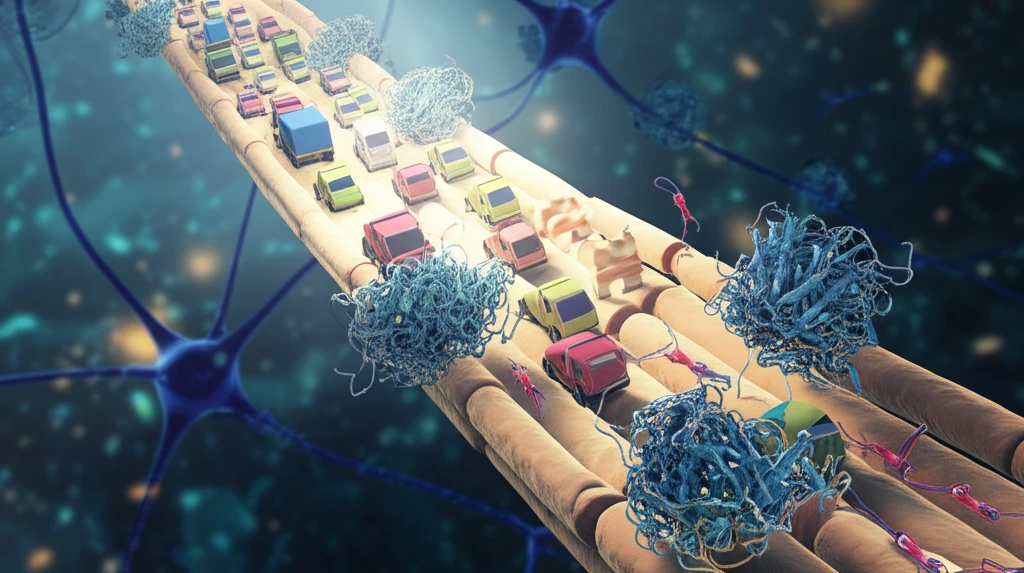
Unlocking Alzheimer's: How Kinesin Traffic Jams Could Be the Key to Early Detection
"New research unveils how disruptions in cellular transport, caused by tau proteins, may offer a novel way to detect Alzheimer's disease before significant damage occurs."
Imagine a bustling city where tiny trucks are constantly moving vital supplies. In our neurons, motor proteins called kinesins perform a similar job, transporting essential cargo along highways known as microtubules (MTs). These kinesins are crucial for maintaining healthy brain function, but what happens when there's a traffic jam?
New research is shedding light on how disruptions in this intracellular transport system, particularly those caused by tau proteins, may be a critical factor in neurodegenerative diseases like Alzheimer's. Scientists are developing sophisticated models to understand how these 'traffic jams' occur and, more importantly, how they can be detected early.
This groundbreaking approach focuses on subtle changes in kinesin movement, offering a potential pathway to diagnose Alzheimer's long before irreversible damage sets in. By understanding the dynamics of kinesin and tau interactions, we can pave the way for earlier interventions and more effective treatments.
The Kinesin Highway and Tau Roadblocks

Kinesins are molecular motors that 'walk' along microtubules, delivering crucial cargo throughout the neuron. This process is essential for everything from maintaining synapses to transporting neurotransmitters. However, kinesins don't always have a clear path. They can detach from the microtubules, diffuse randomly, and then reattach to continue their journey. In healthy neurons, this cycle is efficient, but problems arise when tau proteins get in the way.
- Normal Function: Kinesins efficiently transport cargo along microtubules.
- Tau's Role: Tau proteins stabilize microtubules but can become disruptive.
- Traffic Jams: Excessive tau leads to roadblocks, slowing or halting kinesin transport.
- Clustering Effect: Tau proteins cluster, creating zones of heavy disruption.
A New Hope for Early Detection
The key takeaway from this research is that kinesin traffic jams, caused by tau protein accumulation, could serve as an early warning sign for Alzheimer's disease. Traditional methods often focus on overall transport velocity, which may not change significantly until the disease is advanced. However, this new model reveals that local disruptions in kinesin movement are highly sensitive to tau protein concentration, even when overall velocity remains relatively unaffected. This insight opens the door for developing new diagnostic tools that can detect Alzheimer's at its earliest stages, potentially leading to more effective interventions and improved patient outcomes.
